Question: What is 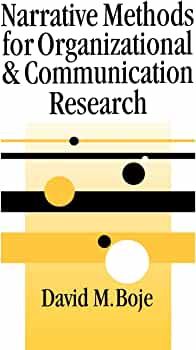
ANTEnarrative? Short
Answer: Antenarrative is a word I invented
in the 2001 book, Narrative Methods for
Organizational & Communication Research
to get at process dynamics of organizational
storytelling. ANTE
(is short for antecedent). It in
the 2001 book as 'before-narrative' and
a 'BET on the future.' Now there
are 7 B's I will introduce to you.
LOOK INSIDE:Read Introduction to this book then you will know the complete answer!
In
2001 book, I proposed a new word "ANTEnarrative"
defining two key aspects the BEFORE and BETS, on
Future. Now in 2023 there are 7 aspects.
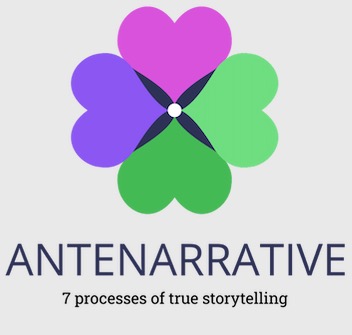
|
7 Antenarrative
Processes, adapted from BOJE 2022 download
book on Pondy, until published Ante has 7
B-processes & Fore means ‘in advance of’
Narrative-closure, -coherence, … with |
|
|
|
|
|
1
Beneath  |
Fore-conception is to
‘Go Beneath’ the language to the silent spaces
between words, the pauses in speech & writing,
to the Flux, Flow, and movement. For example,
listening to baby talk, and wondering what the
silence means or parents disagreeing about
upbringing. |
|
2
Before 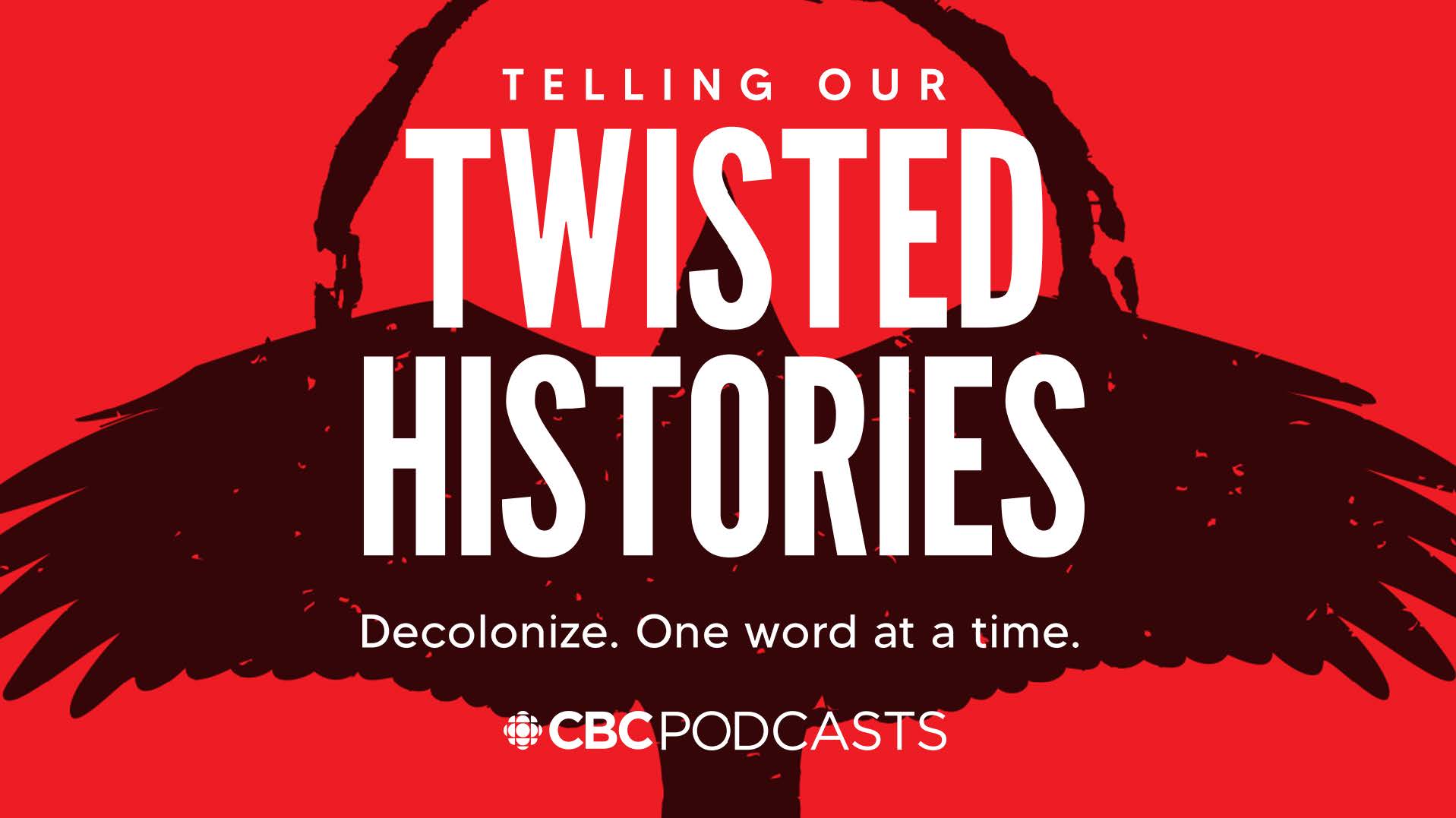 |
Fore-having is the
twisted & entangled histories. It is looking
backwards with retrospective sensemaking. But it is
challenging quite shallow histories erase most of
history by marginalizing microstoria (little
people’s history of resistance to grand
narratives). Before is an on-going rehistoricizing
of the past with new preferences. For example, a
baby born into parent's and grandparent's history,
and into what society expects of babies and
parents. |
|
3 Bets 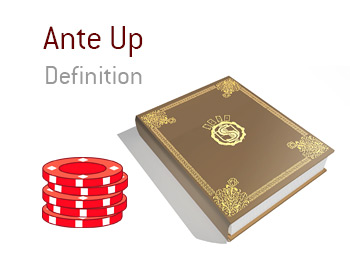 |
Fore-sight is
looking-forward to Futures arriving.We ante-up (as
in poker) into the pot. We observe each others
anteing. Are they bluffing? It is prospective
sensemaking denied by Henri Bergson, and
organization studies until 2001. 'Bets on the
Future' is done by many players making many plots.
It is not treating a linear Beginning-Middle-End
narrative (BME narrative) as the only plot and
getting blindsided.
BME narrative keeps cherry-picking select
actors and very few events, thereby hiding the
futures arriving. Very short-sighted. For example,
parents make bets on a baby unborn, and Ante-Up
new baby furniture and baby clothing, while
planning the baby's choice of university. |
|
4 Being
|
Fore-getting in double
meaning: (1) fore-getting Kairos (in Greek hitting
the target in right moment) of Timing, in stead of
Chronos (chronological, sequential time). Time is
inseparable from spacing (in places) and mattering
of sociomateriality (SpaceTimeMattering
inseparability in Karen Barad’s work).
Fore-getting our Being-in-the-World we are thrown
into illusion. For example, a baby has
Being-in-the-world in place, with adorable moments
of Kairos. |
|
5
Becoming  |
Fore-caring is itself an
ethical process of caring, Becoming is what
is coming-to-be in-Be-in-the-World. It is caring
for all species, not humancentric. For Pondy it is
beyond open system thinking, and is an organic
nature way of thinking (see Ehthinkment.com).
We can think in-advance of just enactment of
retrospective sensemaking or prospective
sense-making, for example the baby arriving, not
yet born has a future. |
|
6
Between  |
Fore-structuring is a
process of setting up infrastructure in-advance.
It is pauses of silence between words spoken or
written. In True
Storytelling System, it is pauses between
the four-hearts. Fore-structuring, for example,
baby-proofing a house before the baby arrives
in-the-world. |
|
7
Beyond |
Fore-grasping by
intuitive, the 6th sense in Grace
Ann Rosile’s (2016) Tribal Wisdom for
Business Ethics & her HorseSenseAtWork.com.
Indigenous Ways of Knowing, (IWOK). The Abduction
best intelligent guess in Charles Sanders Peirce
semiotics. It can be spiritual awareness Beyond
the five senses of sensemaking. For example, I
make a best guess about why the baby is crying,
and try this or that, until baby is happily
playing again. |
Malmö University, Sweden Keynote Address May 23 2022 - Click for Slides
Click here for
(60 minutes) Bakhtin meets Enthinkment Circle - YouTube
(posted May 17 2022), Preparing for
Malmö University
What is the Riddle of Participative Thinking in Bakhtin’s Architectonic Dialogism? May 16, 18, & 19, 2022 Click Here for Slide set for doctoral trianing in antenarrative processes Malmö University
Most Recent Antenarrative Presentation
Slides: Where's the Ethics in Business Modeling?
Aalborg University Nov 16 2021
What are the four
Who-consciousnesses of System Change in True Storytelling
Antenarrative Processes?
Video link https://www.youtube.com/watch?v=amPpjAfWiqg
Antenarrative Presentation Slides: Where's the Ethics in Business Modeling? Aalborg University Nov 16 2021
NEW--> This is May 4 2022 Antenarrative Primer that explores a Mikhail Bakhtin approach to antenarrative processes
Here is a handout of thirteen True Storytelling Processes, Four Hearts, and Four Who-consciousness in-Between-the-Hearts.
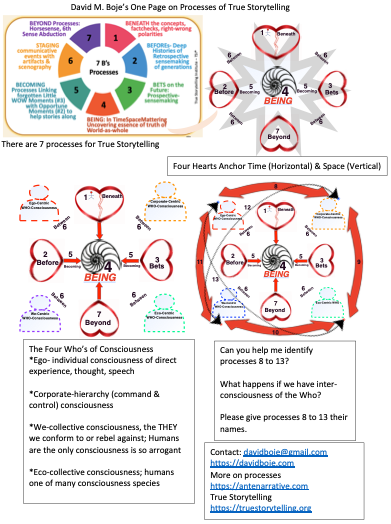
Until recently, we worked with seven processes of antenarrative.
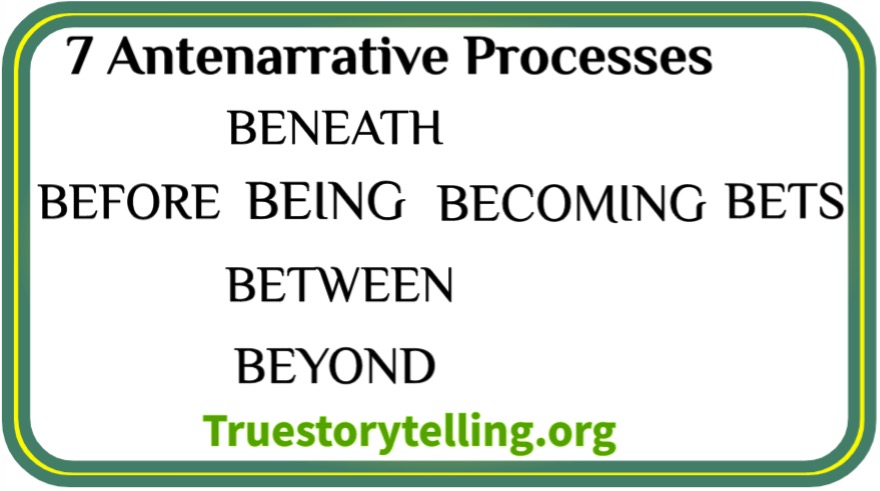
What Are Seven Antenarrative Processes?
I have developed the Heidegger model of 7 antenarrative
processes this last decade, This year 2022, I am returning
to Mikhail Bakhtin and the MATRIX Both are Ontological
ways of unmasking the eventness of Being, unconcealing what
is too settled in the Blue.
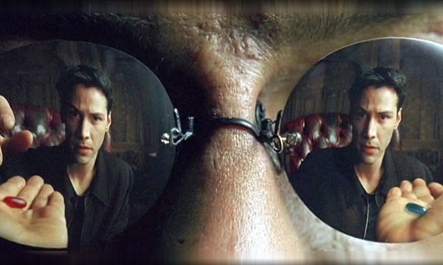
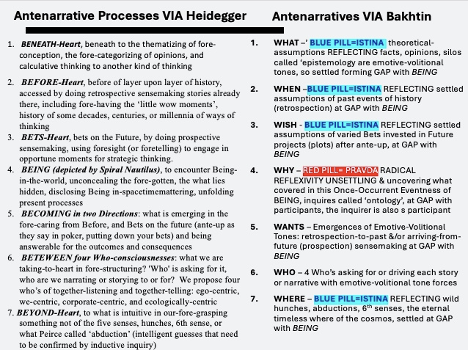
In movie the MATRIX, Morpheus offers Neo the Red or the Blue Pill
Take the Blue pill remain in content of blissful ignorance and illusion, a truth Bakhtin calls ISTINA
Take the Red Pill of potential to lean a life unsettling in what Bakhtin calls PRAVDA, a truth sometimes painful
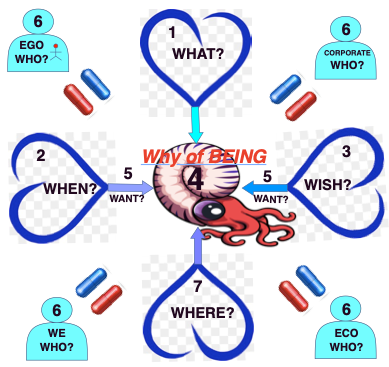
RELEVANCE TO ENTHINKMENT.com
-
The art of thinking, embodying values is a “deed-performing thinking” (Toward Philosophy of the Act, TPA); My thinking” from my unique place in Being” (57)
-
I myself “the one thinking actuals”, “the actually performed act of thinking” (TPA, 58)
-
Does not sever act of thinking from its ontological roots (TPA, 54)
-
Seeks unvarnished truth, Beneath the veil of false claims
-
Distinguishes ISTINA (theoretical/abstract thinking of bystander) from PRAVDA (acts of thinking in once-occurrent event-ness of Being, with answerable consequences)
-
Asks the question: “Who is the author?” (Art & Answerability A&A 210)
-
‘Historical thinking’ that not stuck in Bergson’s durée retrospection
-
‘Vision thinking’ about the future “yet-to-be-achieved unity” (A&A 210)
-
”Participative thinking” (TPA 59), “participative thinking in lived life” (60), that is “Answerable thinking” (58)
7 antenarrative processes. This year I take the PRAVDA-Red Pill and do some 'aesthetic seeing with Bakhtin's Architectonic Dialogism (the interanimation of radical notions of cognitive, aesthetic, and ethical discourses that has Immanuel Kant rolling over in his grave.
Here is the annotation of the 7 Antenarrative Processes

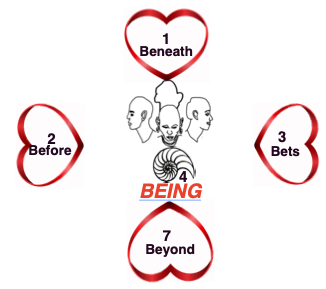
Figure- Depicts the Four Directions the faces are facing to the hearts in the Being of SpaceTimeMattering
The four Between processes of antenarrative interrelate the four Who-consciousnesses. Here is artwork by Sabine Trafimow showing how they can be brught together visually. In the True Storytelling Circles we do this in storytelling conversations.
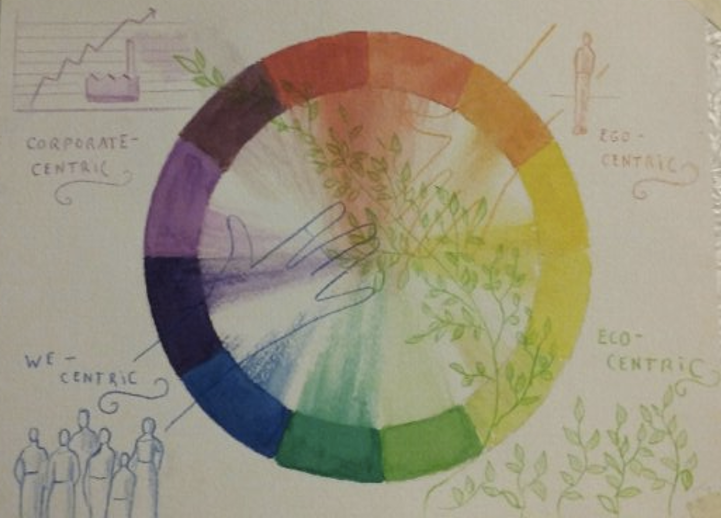
Copyright by Sabine Trafimow (used by permission).
Storytelling Organizations have had difficulty aligning these four Who's of the Between Process.
Next is the annotated summary of 7 B's of antenarrative processes

The Four Hearts anchor VERTICAL: the space (Beneath is abstracting process; Beyond is embodied reflection space, and LATERAL: the time (two directions from Before to Being and from Bets into Being)
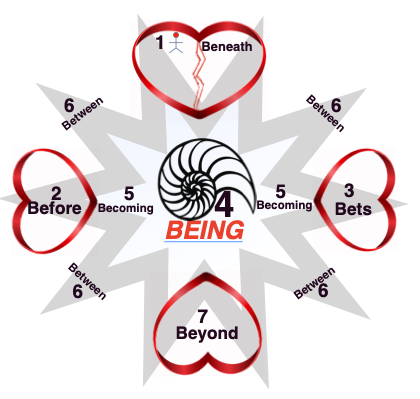
The Four Hearts of True Storytelling inter-relate Four kinds of Systems that inter-connect in the who-consciousnesses I will introduce here. Here is an example worked out with what I consider the best statement of system theory, William James (1907), book, Pragmatism.
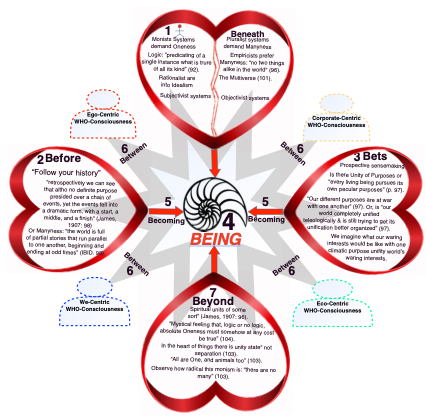
The 7 Processes get organization capacity to Heart-of-the-Matter, with all three loops working collaboratively in Together-Telling & Together-Listening. See
Larsen,
Jens; Boje, D. M.; Bruun, Lena.(2021). True Storytelling:
Seven Principles for an Ethical and Sustainable
Change-Management Strategy. London: Routledge.
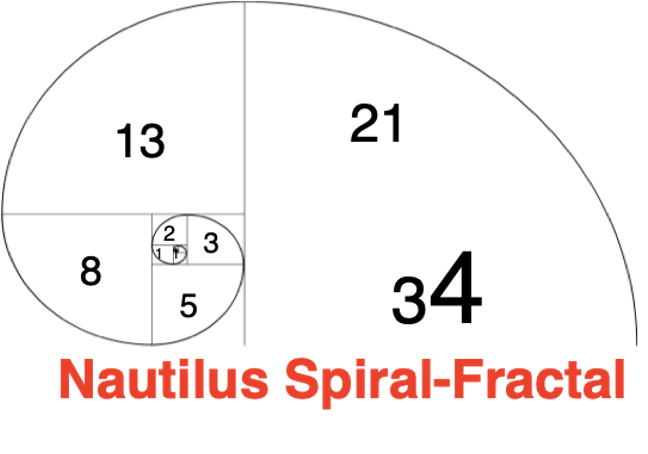
Fibonacci-Spiral-Fractal
1+1=2; 1+2=3; 2+3=5;
3+5=8; 5+8=13; 8+13=21; 13+21= 34, etc.
The Nautilus Shell Spiral is 4th Process, all four hearts point to it. It is also the iconic symbol of True Storytelling Institute (TSI).
Boje's 'True Storytelling Capabilities Presentation to OD Conference "BUILDING ORGANIZATIONAL CAPABILITIES TO WIN IN THE 2021" Existential Crises- Aug 19 2021 Click Here for Slides
The 7 processes of Antenarrative are existential, already in the FORE. The Illusion communication has taken place just by doing together-telling, without the fundamental process of together-listening is being stressed.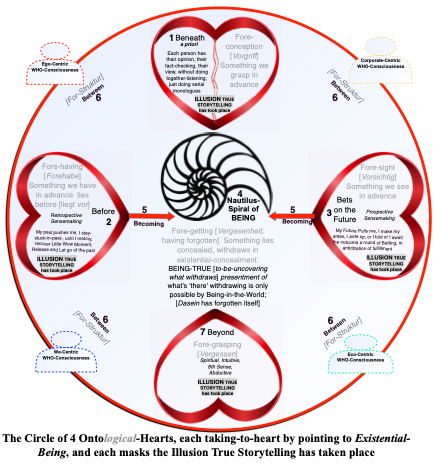
More of the development of taking-to-heart relation to telling is developed at Enthinkment Circcle: https://enthinkment.com
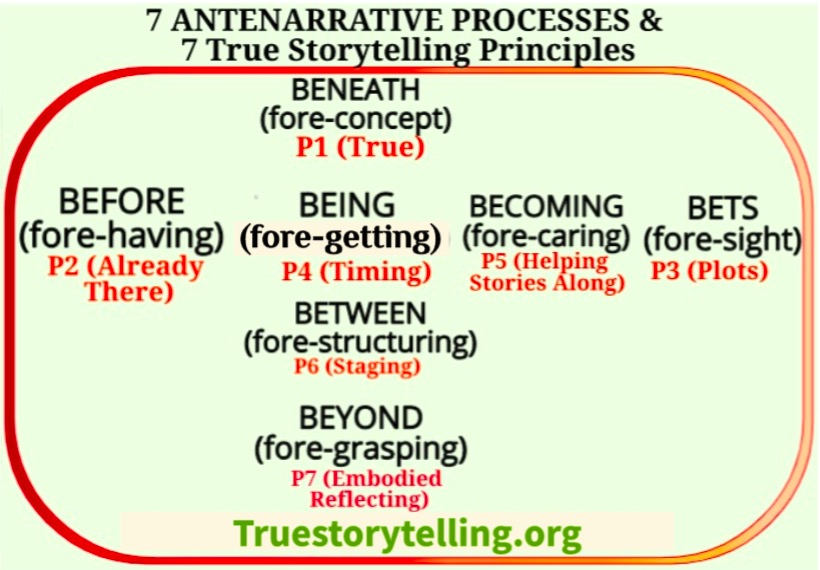
Since I became emeritus, I have be doing training seminars for practitioners with True Storytelling Institute (TSI https://truestorytelling.org). The True Storytelling 7 principles are supported by the 7 antenarrative processes.
Let us begin with an example. The Tamara-land of
Disneyfication, since 1991, one of my more widely cited and
read articles, because it deconstructed the SpaceTimeMattering
of Disneyland (Boje, 1991, get TAMARA-LAND pdf).
We work with the Four Hearts, the 7 True Storytelling
Principles, and support with 7 Antenarrative processes. All
four hearts point to BEING.
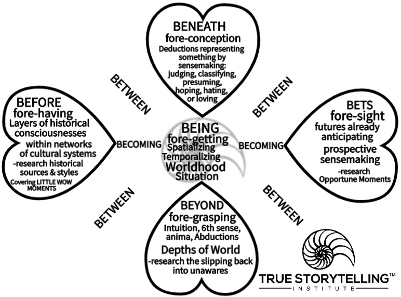
Discovering 6 Additional Antenarrative Processes, with original 7, that makes 13 processes to better understand and change organizational system process dynamics, using True Storytelling conversation practices.
THE FOUR WHO's We are addressing the space of BETWEEN the four Hearts, each with its antenarrative process. We are looking at two eventings of BECOMING that about uncovering the essence of True Storytelling BEING-there by aligning, even integrating, four Who-Consciousnesses.
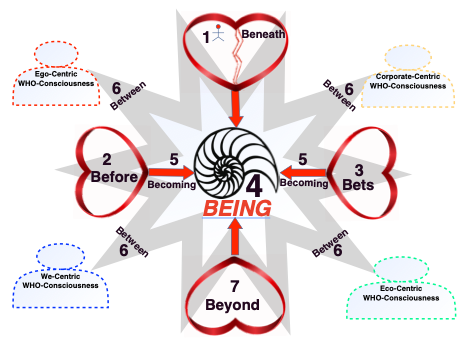
See Boje, D. M.; Pelly, D. M.; Saylors, R.; Saylors, J.; Trafimow, S. (2022). Implications of Tamara-Land Consciousnesses. Discourses for Organization Culture Studies. No. 16 ISSN 2450-0402. http://dyskursy.san.edu.pl/abs/dyskursy16-4.pdf
Hybrids of Multiple Systems that are Interplaying the WHO-Consciousnesses
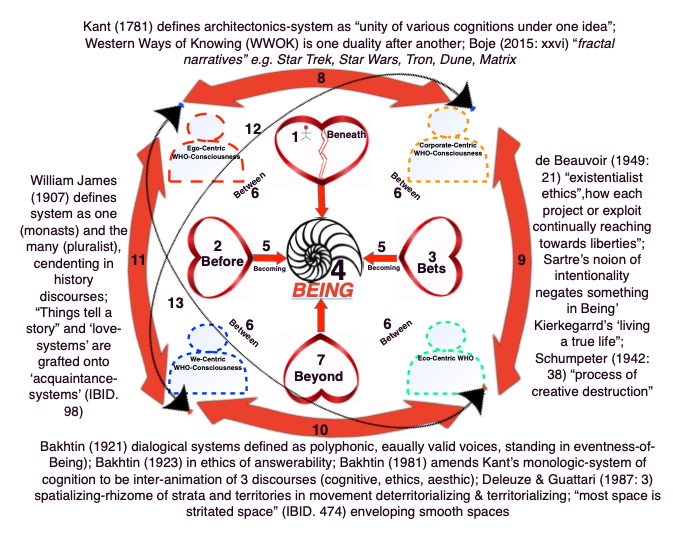
Figure shows four definitions of systems that interanimate-among-four-Who-Consciousnesses. For mre on this see Boje (2015) book on tetranormalizing fractals.
Grace Ann Rosile and I have been developing embodied restorying processes (ERP) over last twenty years. Here are seven steps we use in interventions for family and organizational systems:
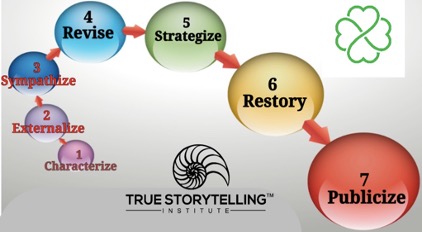
The next image summarizes the Embodied Restorying Tool that brings together the Between-the-hearts processes (#6) by conversations across the Four Who's. SOme of this is done with sandtray work. Other times its just with storyboards.

In the Beyond process, Charles Sanders Peirce's (1839-1914) semiotics. For a military example of working with veterans and their family systems in embodied restorying process, please see: Flora, J., Boje, D., Rosile, G. A., & Hacker, K. (2016). A theoretical and applied review of embodied restorying for post-deployment family reintegration. Journal of Veterans Studies, 1(1), 129-162. Click here to see the article online.
That original paper by Louis R. Pondy
(1976), desk-rejected by a very famous journal, focused on
the second half of Boulding’s (1956) article and left out
anything to do with what I call the ‘who-consciousness’.
Then in 1979 (Pondy & Mitroff) do mention
[who-]consciousness, but ignored the inter-disciplinary,
hybrid systems notions of Boulding’s article. Without the
crisscrossing of the Who-consciousnesses, these nine levels
of systems, all in rank order hierarchical, meaning you
cannot do interdisciplinary systems of organic
[eco-consciousness] with a [social] network:
Level 1: Frameworks
Level 2: Clockworks
Level 3: Control Systems
Level 4: Open Systems
Level 5: Blueprinted-growth systems
Level 6: Internal Image Systems
Level 7: Symbol Processing Systems
Level 8: Multi-Cephalous Systems (several
brains, aka social network)
Level 9: Some Level of Complexity not yet
imagined
Now suppose we can only rank order by system levels. The solution is elegant, but is it what happens in complex organizations?

I am working on a new model, in which ensembles of systems can be inter-disciplinary without the necessity of a hierarchical rank ordering. It is based on a new book I am writing for Routledge: The Management Thought of Louis R. Pondy: An Existential Journey.
In the next version of the color wheel there are three cybernetic systems movements. 1st Order Cybernetics (shown above) is about hierarchical governance systems that have machine logic of self-correction. 2nd Order Cybernetics work by Heinz von Foerster (1911-2002) and Gregory Bateson (1904-1980). 3rd Order Cybernetics is the life work of Brier's (2008 2011) work is a hybrid of Niklas Luhmann (1927-1998) types of autopoiesis with Charles Sanders Peirce's (1839-1914) semiotics. K and L are left unspecified, as yet undiscovered.
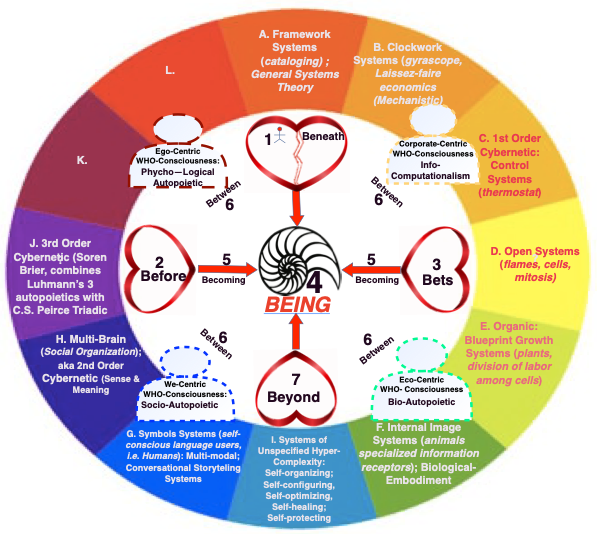
Figure
- Depicts contributions of Brier's Cybersemiotics that
combines Luhmann's three autopoieses with Charlse Sanders
Peirces pragmatist-semiotics.
In the new book I am writing for Routledge,I tell the story
of how system studies in the U.S. missed out on what was
happening in 2nd and 3rd order cybernetics (e.g. Brier,
1995; 2008; 2011). Pondy's (1976 in Boje 2005) desk rejected
article), revised and published 1979 with Mitroff) sought to
go beyond Open Systems (D in image above). What they
missed is the onset of the 2nd-order and 3rd-order
cybernetic systems which were interdisciplinary (hybrids) of
systems which following Boulding, Pondy (& then with
Mitroff) placed in hierarchical ordering. See Boje (2014)
which puts the multiple systems in combinations that are
non-hierarchical orderings, and more recent work on ensemble
storytelling organizing systems.
The point is that instead of hierarchically
orders systems there can be hybrid combinations.
See the following and more in reference list below:
Boje
(2919a; 2019b) provide further explanation of the Brier’s
work on 3rd-order cybernetics of cybersemiotics.
Pondy, L. R.
(1976/2005). Beyond open system models of organization
(classic paper with an introduction by David Boje). Emergence:
Complexity and Organization, 7(3–4), 119–137. https://journal.emergentpublications.com/article/beyond-open-system-models-of-organization-2/.
Boulding,
Kenneth. E. (1956). General systems theory—the skeleton of
science. Management Science, 2(3),
197-208.
Boje, D. M.
(2014). Storytelling organizational practices:
Managing in the quantum age. London: Routledge.
Brier, Søren. (2008). Cybersemiotics:
Why information is not enough!. University of
Toronto Press.
Boje, D. M.
(2019b). Storytelling and
Cybersemiotics. Chapter to appear in Introduction to
Cybersemiotics: An international perspective edited
by Carlos Vidales and Søren Brier, in Springer Series
on Cybersemiotics. Click here for pre-press draft.
This article: Rosile, Grace Ann; Boje, David M; Herder Richard A.; Sanchez, Mabel. (2021). The Coalition of Immokalee Workers Uses Ensemble Storytelling Processes to Overcome Enslavement in Corporate Supply Chains. Business and Society. Business & Society, Vol. 60(2) 376–414. Click here fore pre-press pdf.

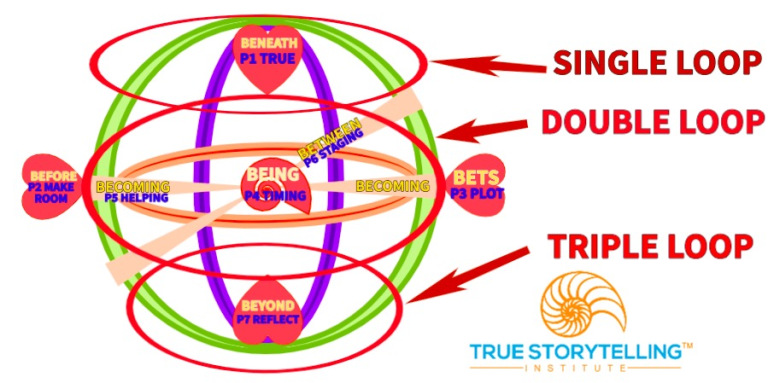
True Storytelling Blog Activity:


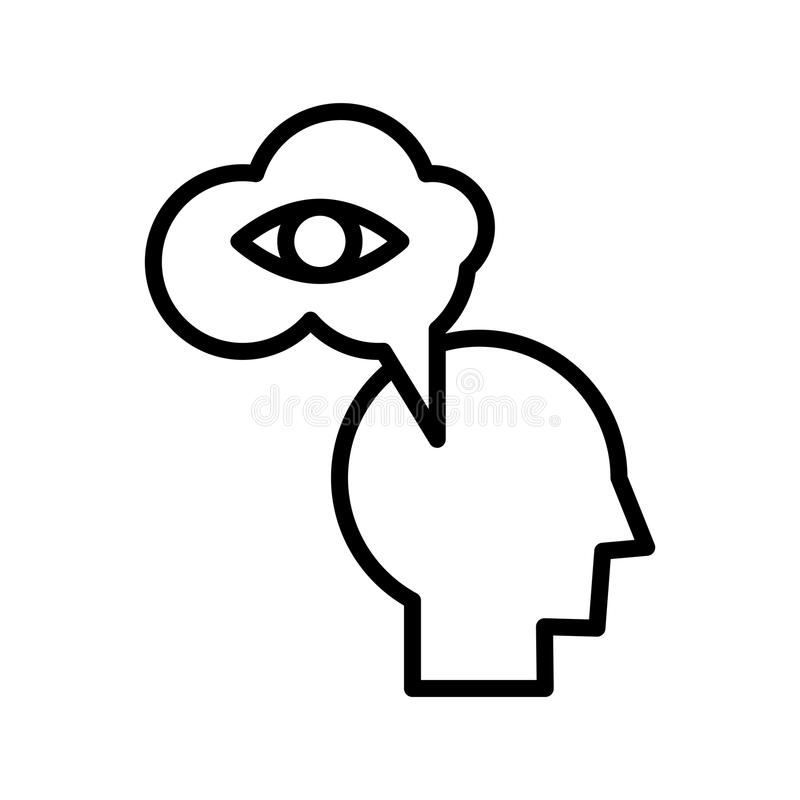
What is Antenarrative BENEATH?
15 mins ago
What are BETS of Fore-sight and Fallacy of Plot
7:45 am on June 9, 2021
What is Being in True Storytelling?
RETURN to MAIN PAGE of Antenarrative.com